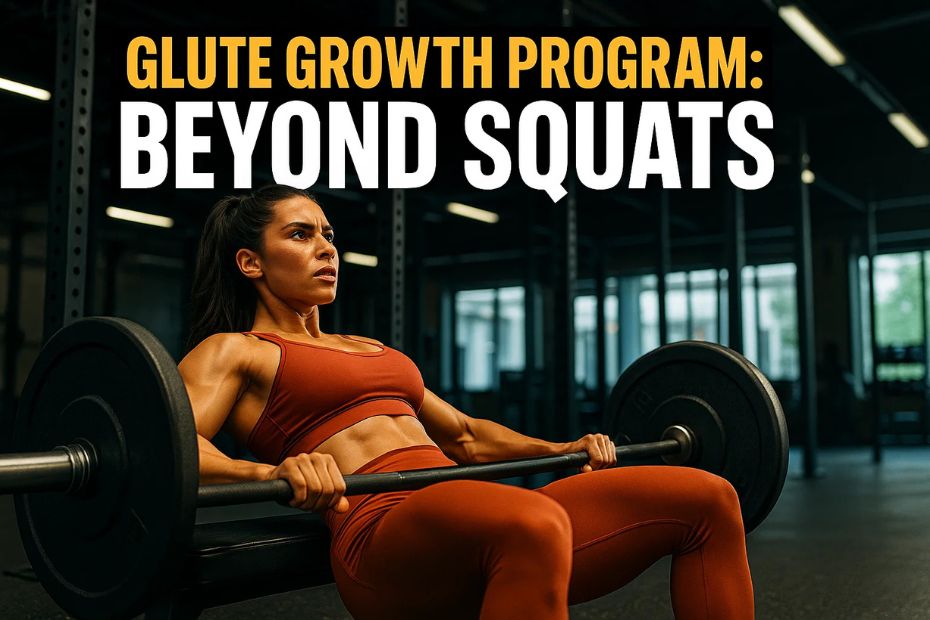Introduction
- Briefly introduce the importance of glute training: aesthetics, strength, posture, and athletic performance.
- Address the misconception that squats alone are enough for glute development.
- State the purpose: to provide a science-backed approach to building stronger, fuller glutes.
1. The Importance of Muscle Activation
- Glute anatomy basics: gluteus maximus, medius, and minimus roles.
- Why activation matters: Many people have “sleepy glutes” due to sedentary lifestyles, causing other muscles (quads, hamstrings, lower back) to dominate.
- Activation drills: Glute bridges, clamshells, and banded lateral walks as pre-workout primers.
- Key takeaway: Proper activation enhances mind-muscle connection and ensures the glutes are the prime movers during training.
2. Hypertrophy Rep Ranges for Glutes
- Muscle growth science: Hypertrophy occurs through mechanical tension, metabolic stress, and muscle damage.
- Optimal rep ranges:
- Heavy compound lifts: 6–10 reps for strength and tension.
- Moderate loads: 10–15 reps for hypertrophy.
- Higher reps (15–20+): Effective for glute endurance and metabolic stress, especially in isolation movements.
- Balanced approach: Mixing rep ranges within a program maximizes development of all glute fibers.
- Progressive overload principle: Gradually increasing weight, reps, or volume ensures continuous growth.
3. Three Underrated Glute Exercises and Proper Form
- Barbell Hip Thrust
- Set-up: Sit on the floor with upper back against a bench, barbell over hips.
- Movement: Drive hips upward, squeeze glutes at the top, avoid overextending lower back.
- Key cue: “Tuck the pelvis and drive through the heels.”
- Why it works: Direct glute maximus activation with peak contraction.
- Cable Pull-Through
- Set-up: Face away from a cable machine with rope attachment between legs.
- Movement: Hinge at the hips, pulling rope forward while contracting glutes.
- Key cue: “Push hips back, then squeeze forward.”
- Why it works: Trains the hip hinge pattern and targets glutes in their lengthened position.
- Bulgarian Split Squat (Glute-Biased)
- Set-up: Rear foot elevated on bench, front foot forward to emphasize glutes.
- Movement: Descend into a lunge, torso slightly leaning forward.
- Key cue: “Push through front heel, feel stretch in glutes.”
- Why it works: Unilateral strength, stability, and deep glute activation.
4. Sample 4-Week Progressive Overload Plan
- Frequency: 2–3 glute-focused sessions per week.
- Structure: Combine compound lifts + accessory work.
- Progression example:
- Week 1: Moderate weight, focus on form and activation.
- Week 2: Increase load by 2–5%, maintain rep range.
- Week 3: Add extra set or increase reps slightly.
- Week 4: Push to near-failure within rep range, then deload afterward.
- Sample workout:
- Hip Thrusts: 4×8–10
- Bulgarian Split Squats: 3×10–12 each leg
- Cable Pull-Throughs: 3×12–15
- Banded Lateral Walks (finisher): 2×20 steps each direction
Conclusion
Encourage readers to train smart, be consistent, and prioritize form over ego lifting.
Reinforce that squats are valuable but not enough for maximal glute growth.
Highlight the importance of activation, varied rep ranges, exercise selection, and progressive overload.
